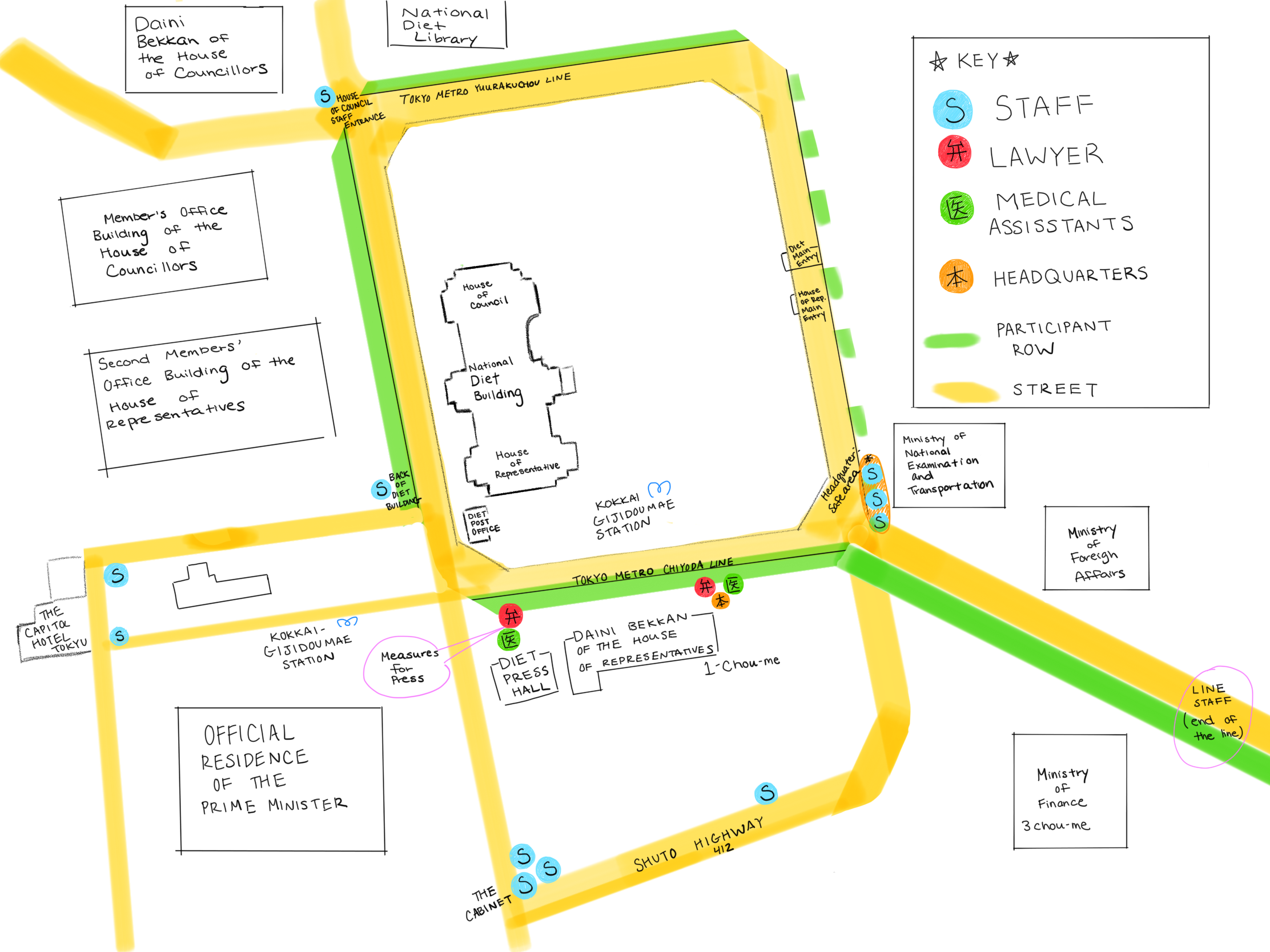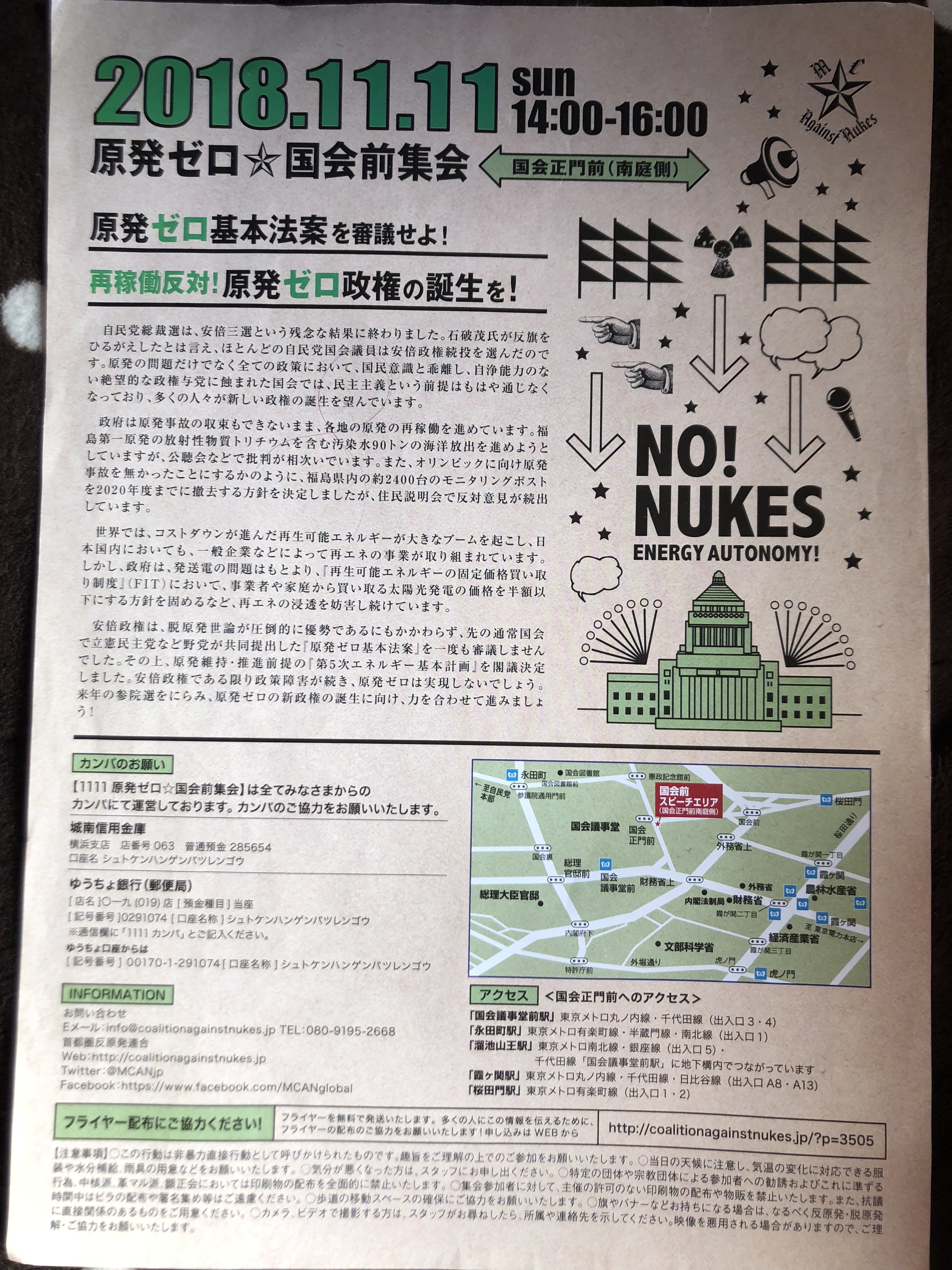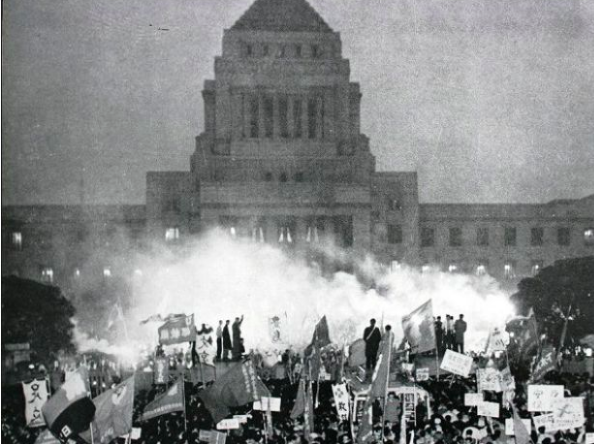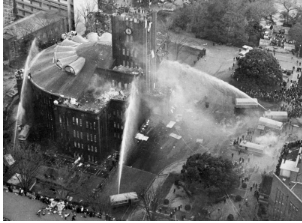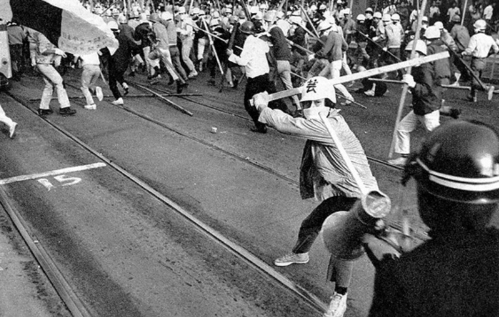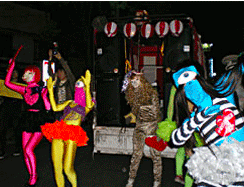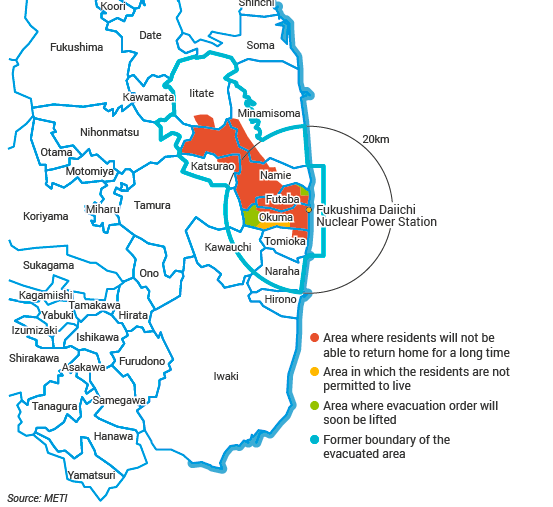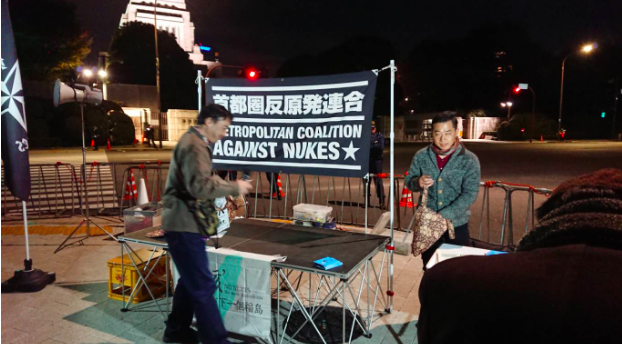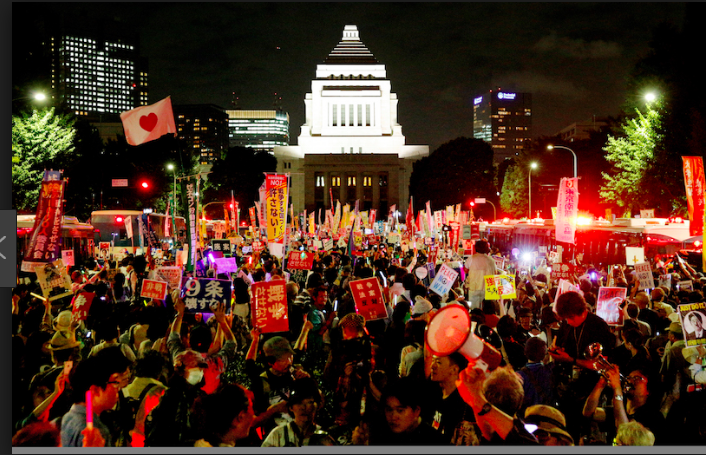The symbolic distinction in the use of space during the anti-nuclear protests plays to deepen and clarify the initial target audience of the whole operation. The protesters understand the frivolity of appealing to those in the seats of the Diet: they have experienced years and years of protests coming up fruitless. Reading the actions and organization of the anti-nuke protests, one might conclude that the departure from the style of SEALDs and ANPO is an attempt to capture a wholly different group of supporters than those of the past. The emphasis here is on the experience of the natural observer, not the politically weighted Senator. In lieu of this, it is simple to understand why the protests have been laid out in such a way: both in terms of spatial and organizational reasoning.

For one, the splitting of the protest into two distinct locales begins to elucidate itself. Normally, protests emphasis the size of its gathering as the metric of influence. Large protests in history have often included the occupational power of many bodies. Indeed, SEALDs took this approach in the same relative space as the modern anti-nuke movement, as photos of the protests see the very same streets we researched absolutely flooded with Japanese youth culture. These photos mirror something more Westernized in protest culture, some thing upon which Dr. Edeltraud Roller– Professor of Political Science at
Johannes Gutenberg-University — sums up in Contexts of political protest in Western democracies: Political organization and modernity: the deemphasis on the personal and the focusing on the overall society as the source of discontent. Roller claims that, “[p]olitical entrepreneurs and organizations are needed to define discontent and transform it into political action”. (Roller, 10). The insinuation of this statement is one that describes the majority of what the public image of a protest is: dominated and most influenced by the weight of body counts and political sway within attendants. In this style, the faces of each participant are held with less overall weight than that of the whole. This can be interpreted as a form of protest collectivism.

Contrary to what one may expect, Kasumigaseki is inhabited by a protesting style more akin to the western ideals of personal individualism, securely setting up the movement as a cultural anomaly in modern Tokyo. This is not explicitly understood by an external view alone but is indicated and further reinforced by the way in which the anti-nuclear group structures itself spatially in Kasumigaseki. The splitting of the protests into two distinct locales acts as a way to elongate and intensify the personal connection between the protesters and the average passing citizen. A chant that at first seems homogenized becomes deeply personal as each set of eyes look at you in earnest during the one-sided exchange. The extravagance of a mob is traded for a one-to-one connection that you feel when walking through these protest spaces. The use of the space indicates a deep desire to ingrain the issue as something deeply relevant to each and every citizen, rather than those only associating with an organization or industry.
Cresswell’s theory and work on the relationship between space and place carries an interesting anecdote about this use of space. Cresswell’s most basic definition of the difference lies within place being seen as “a meaningful location” (Cresswell 10). The trouble the befalls the modern protesters is that the history of Kasumigaseki as a space of protest has already preceded it as a place of coalition and resistance. However, what SEALDs and ANPO have done in the past has left the streets branded as a mere gathering space. By deliberately separating and truncating the size of the protest, the anti-nuclear movement is attempting to give the space of Kasumigaseki a palpable identity as a place of understanding and personal conviction, rather than a mere space of political controversy. Whereas the SEALDs movement began and ended as an event–a time and setting in which something occurred–the modern iterations of gatherings relinquish their identity as an event or phenomenon, and instead seek to display their stance on the issue by the transformation of the culture in that space. Kasumigaseki has long been known as a setting in which countercultural protests have occasionally cropped up, and the history of protest in 1960’s Tokyo and beyond have largely permeated the public mindshare.


Kasumigaseki’s current form is a direct response to this and an attempt to create nuance in a space that has been branded as a performative stage. Instead of the thousands of bodies gathering in disruption, anti-nuclear sentiment is carried by individual. The location is slowly but surely being transformed from the mere space that was assigned it by history into a place of deep, personal struggle against a larger entity (in this case, the Japanese governing body). The space has been carefully respected so as not to create roadblocking or traffic jams for locals. There is no overt aggression in the expression of the act in the modern, as the organizers understand that the long-term shift of the space from one of malcontent to one of community is something that cannot be culturally displaced.
HT
